Drapes in India Through Dance Forms – Unraveling the Elegance
18/03/2024 2024-03-18 15:26Drapes in India Through Dance Forms – Unraveling the Elegance
Drapes In India – Describing Elegance Through Dance
Drapes in India, an essential element in Indian dance forms, not only add a visual allure but also hold profound cultural significance. From the vibrant swirls of a Kathak dancer’s ghagra to the precision of a Bharatanatyam artist’s pleats, the use of drapes transforms movement into a captivating narrative.
Each state boasts its unique way of draping traditional attire, whether it’s the vibrant hues of a Gujarati saree, the simplicity of a Maharashtrian Nauvari saree, or the intricate pleats of a Kanjeevaram silk saree in South India. Draping, in this sense, becomes a visual representation of the diversity that defines India.
The Poetry in Motion: Graceful Flow in Kathak
In Kathak, the flowing movements and intricate footwork demand a costume that complements the rhythm. The ghagra, adorned with sequins and intricate embroidery, sways with every twirl. The dupatta, gracefully draped over the shoulder portraying Drapes in India, becomes an extension of the dancer’s expression, enhancing the storytelling aspect of the performance.
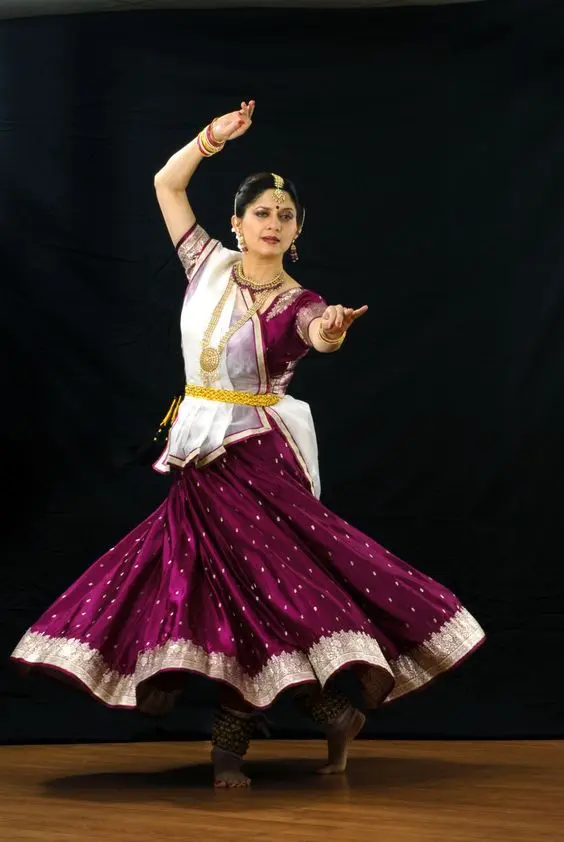 Source: Pinterest
Source: Pinterest
Precision and Symmetry: Bharatanatyam’s Prowess in Pleats
Bharatanatyam is another example of drapes in India, known for its geometric precision, and relies heavily on the skillful arrangement of pleats. The saree, meticulously pleated and pinned, accentuates the crispness of the dancer’s movements. Each fold holds symbolism, contributing to the narrative of the dance. The carefully draped odhani adds an extra layer of elegance, creating a visual spectacle.
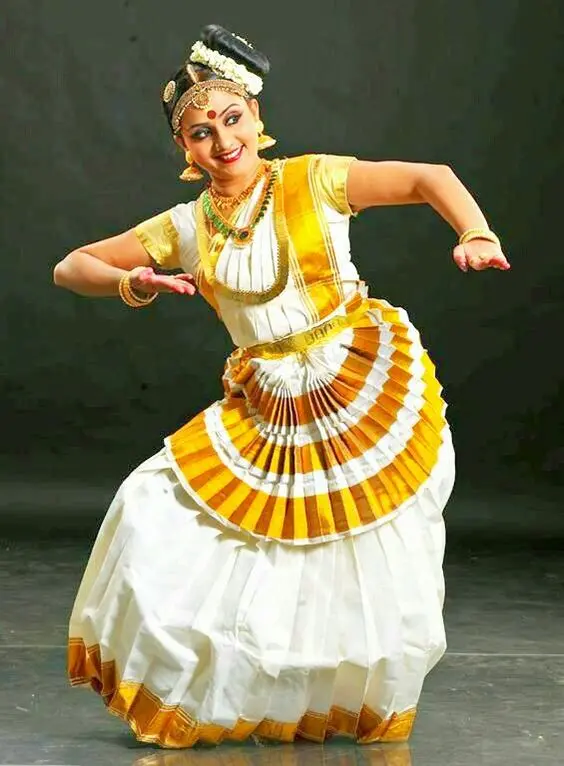
Source: Pinterest
Expressive Drapes: Emotional Resonance in Odissi
In Odissi, the costume is a canvas for emotional expression. The elaborate draping of the saree portrays the unique style of drapes in India and the unique arrangement of jewelry serves as a tool to convey various moods. The fabric, when manipulated skillfully, becomes an extension of the dancer’s emotions, turning each performance into a deeply evocative experience. The fabric becomes a tool to convey various moods, turning each performance into a deeply evocative experience.
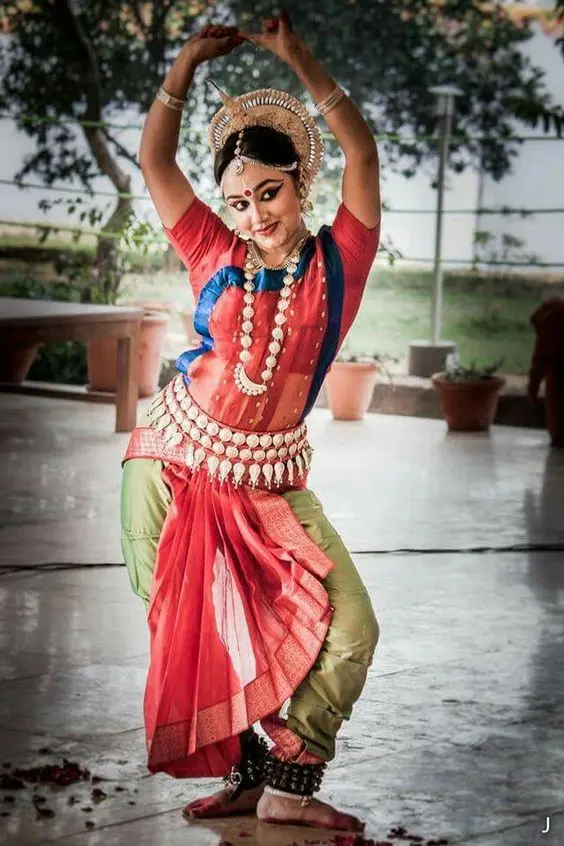
Source: Pinteres
The Quintessential Drape: Unique Kuchipudi Saree
The primary attire for female Kuchipudi dancers is a richly woven silk saree which represents Drapes in India. Unlike the pleated saree seen in Bharatanatyam, the Kuchipudi saree is draped uniquely. The pleats are wider and more intricately arranged, allowing for fluid movements and showcasing the intricate designs of the fabric. The pallu, or the loose end of the saree, is often utilized to enhance expressive gestures.
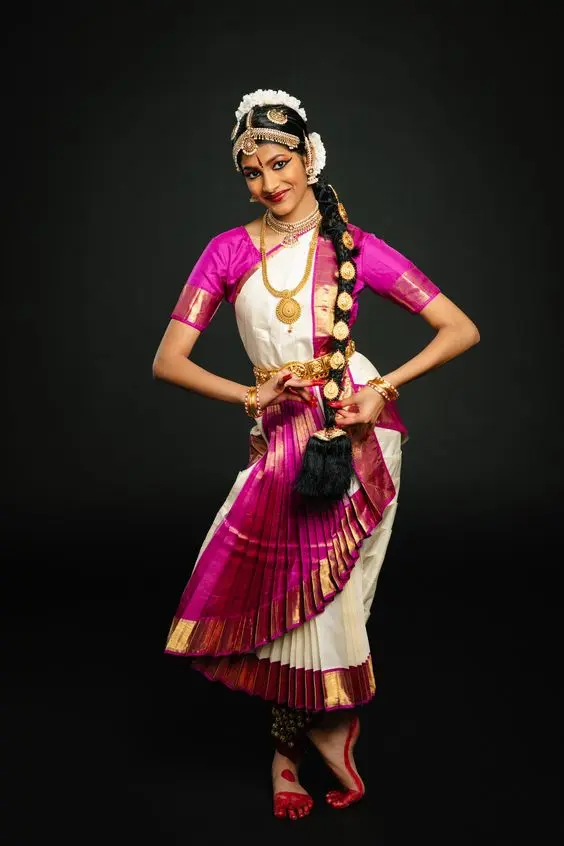
Source: arangetram.me
Regional Variations: Diverse Drapes Across India
Indian dance forms are as diverse as the country itself, and this diversity is reflected in costume choices. From the vibrant colors of the Kathakali dancer’s costume in Kerala to the minimalistic grace of the Mohiniyattam attire, drapes play a pivotal role in capturing the essence of each region’s cultural narrative and the drapes in India.
The off-white saree, adorned with simple gold borders, is draped in the traditional Kerala style. The focus is on subtle movements and expressions, and the costume reflects this aesthetic with its understated charm.
Modern Interpretations: Fusion of Tradition and Contemporary Trends
As the world evolves, so does the interpretation of traditional art forms and so do the drapes in India. Modern choreographers are experimenting with drapes, blending traditional aesthetics with contemporary styles. This fusion not only breathes new life into the dance forms but also attracts a wider audience.
In the realm of Indian dance, drapes in India are more than just wrapping costumes; they are garments for storytellers, weaving tales of tradition, emotion, and cultural richness. The way a dancer adorns and moves with the fabric is a testament to the deep-rooted connection between art and attire. As we continue to celebrate the beauty of Indian dance forms, the artistry of drapes will undoubtedly remain a timeless and integral part of this captivating journey.
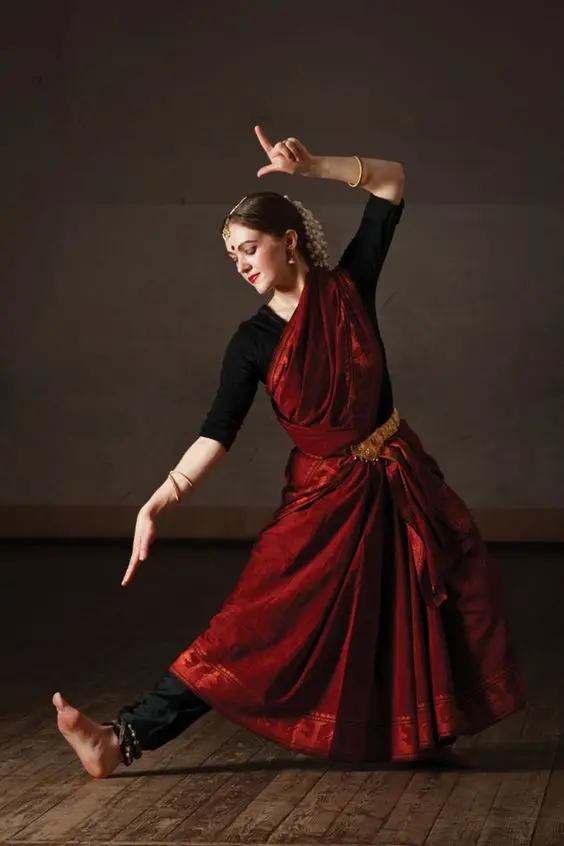
Source: Pinterest
Moving beyond classical dance, Bollywood dance, a vibrant and contemporary expression of Indian culture, also embraces the significance of draping. The flowing sarees and dynamic movements in Bollywood dances add a modern flair while still paying homage to the traditional art of draping.
Moreover, the regional diversity in India is reflected in the various draping styles. The vibrant and colorful drapes in Garba mirror the joyous spirit of Gujarat, while the serene drapes in Mohiniyattam capture the essence of Kerala’s grace. Each dance form becomes a living canvas where the fabric narrates tales of the region it represents.
Draping in Indian dance is not just about aesthetics; it’s a harmonious blend of functionality and symbolism. The garments worn by dancers are designed to facilitate movement, ensuring that every gesture and step is highlighted. The synergy of form and function in draping enhances the overall visual appeal of the performance.
As we conclude our exploration, it’s evident that drapes in India being portrayed in dance is a dynamic and evolving art. It not only pays homage to tradition but also embraces innovation. Modern interpretations and fusions breathe new life into the age-old practice, showcasing the adaptability of Indian dance forms to contemporary sensibilities.
In essence, the art of portraying drapes in India through dance is a celebration of diversity, culture, and expression. It transcends the physical realm, weaving together a narrative that resonates with history, mythology, and the ever-evolving pulse of contemporary society. It’s a journey where every fold of fabric tells a story, and every movement is a brushstroke on the canvas of India’s rich cultural tapestry.
Drapes of India are quite an essential part of the culture and what makes it more beautiful and worth knowing is the fact that it is never-ending. There is an opportunity to learn more about such brilliant techniques when you plan to have a career in fashion designing and here at JD Institute of Design, we offer you more than just a learning platform. All you need to do is click on the link www.jdinstitute.edu.in and apply for the course that helps you fulfill your dreams.













